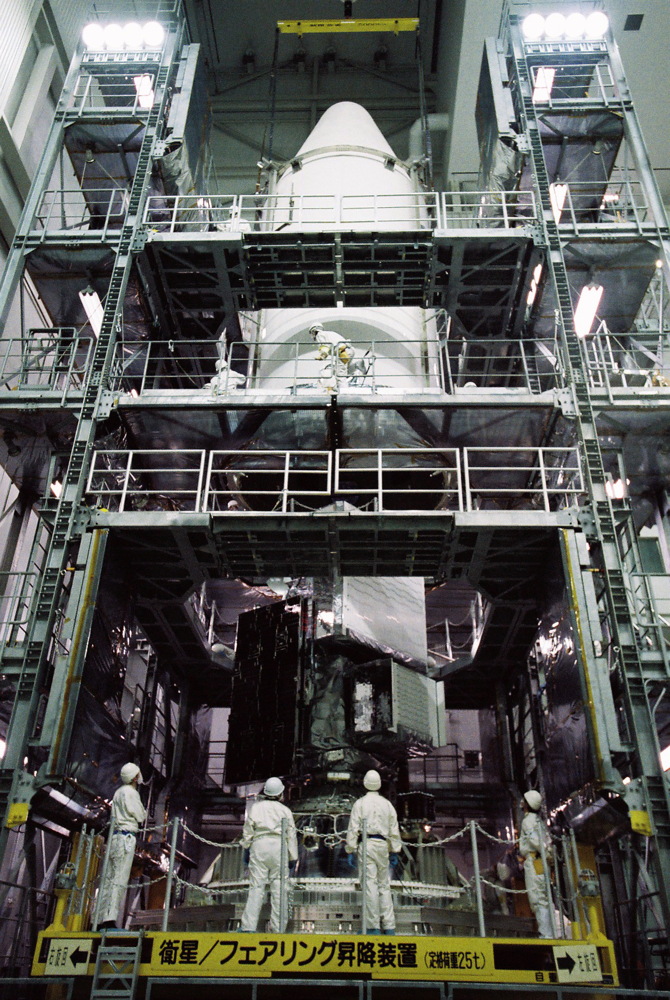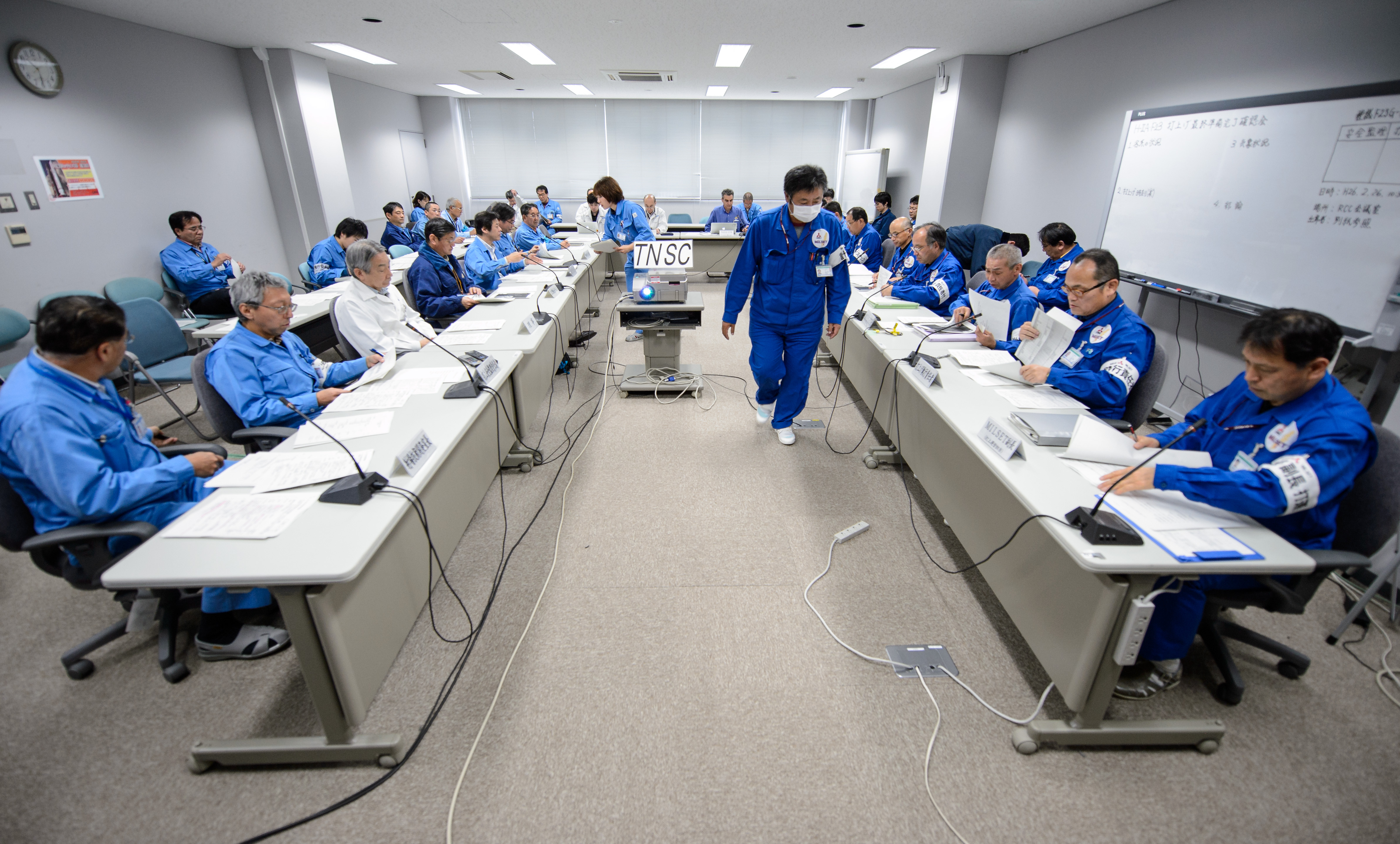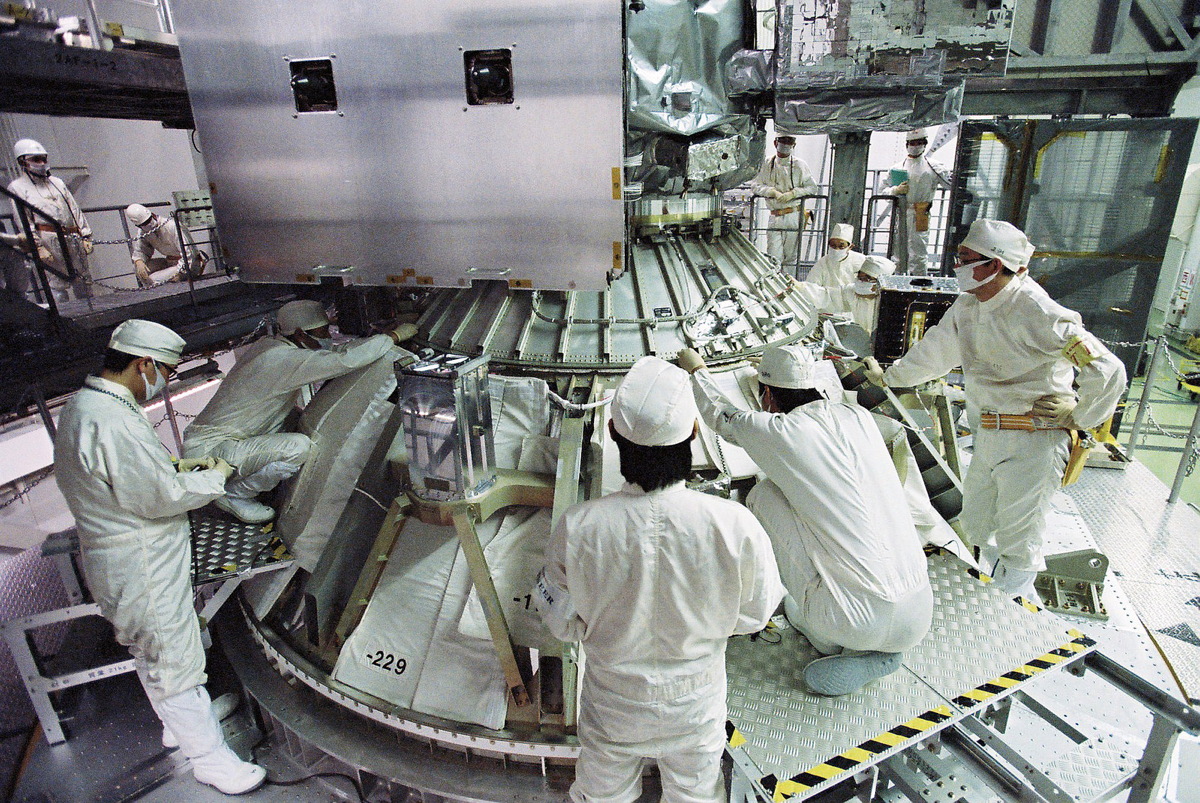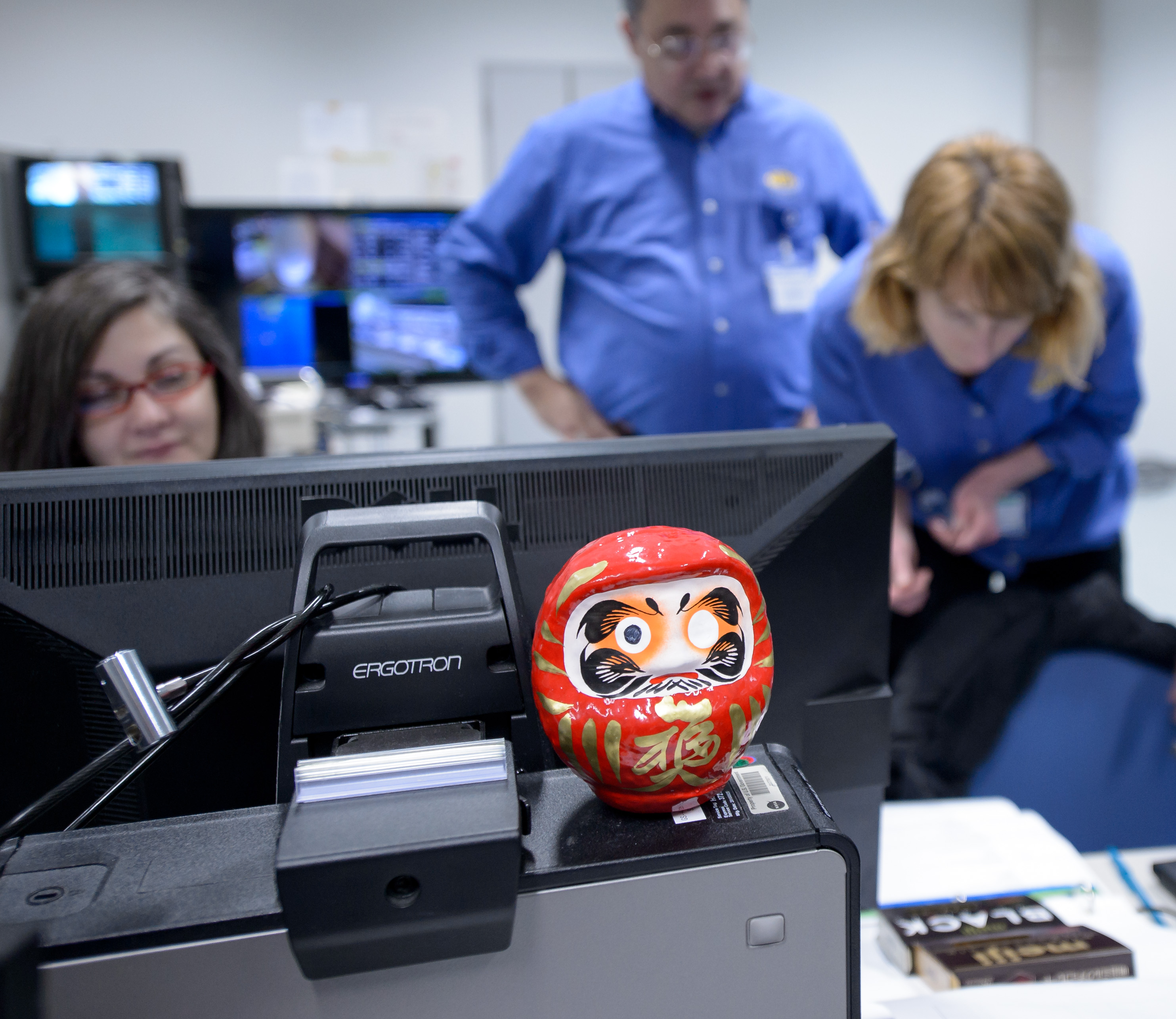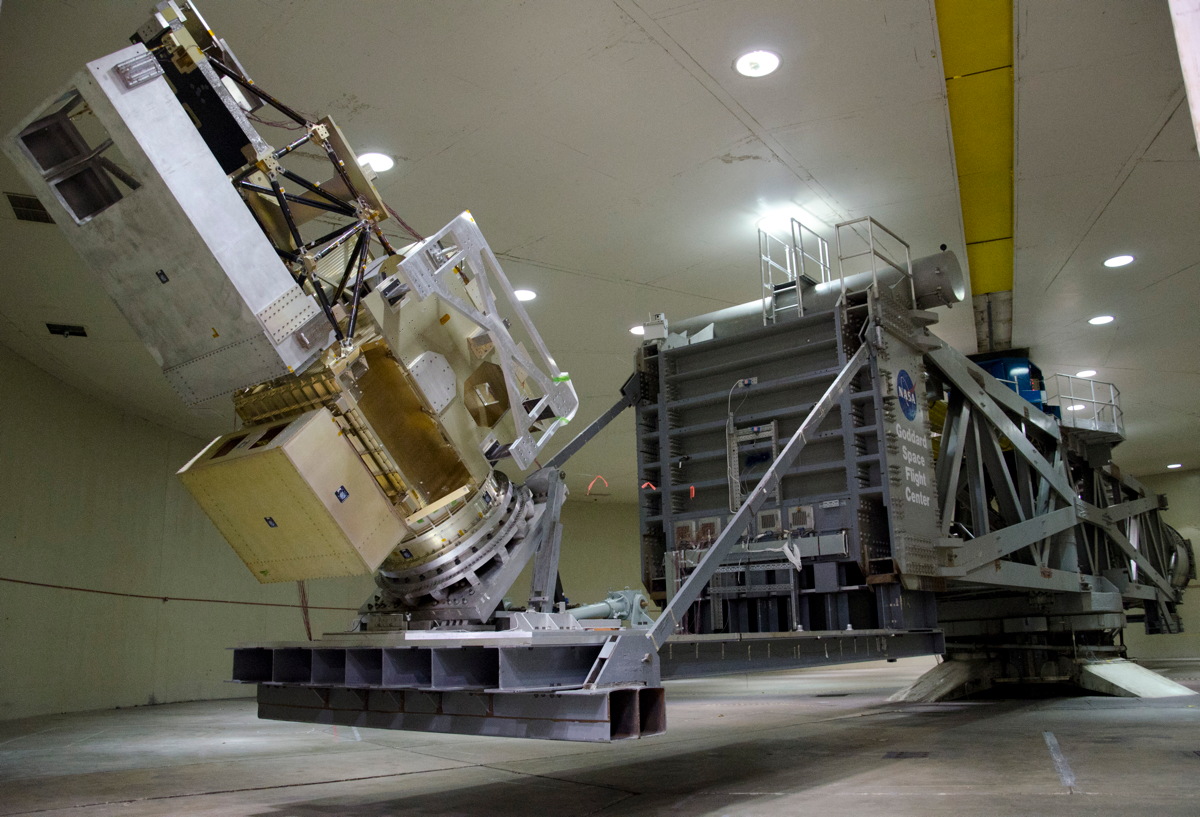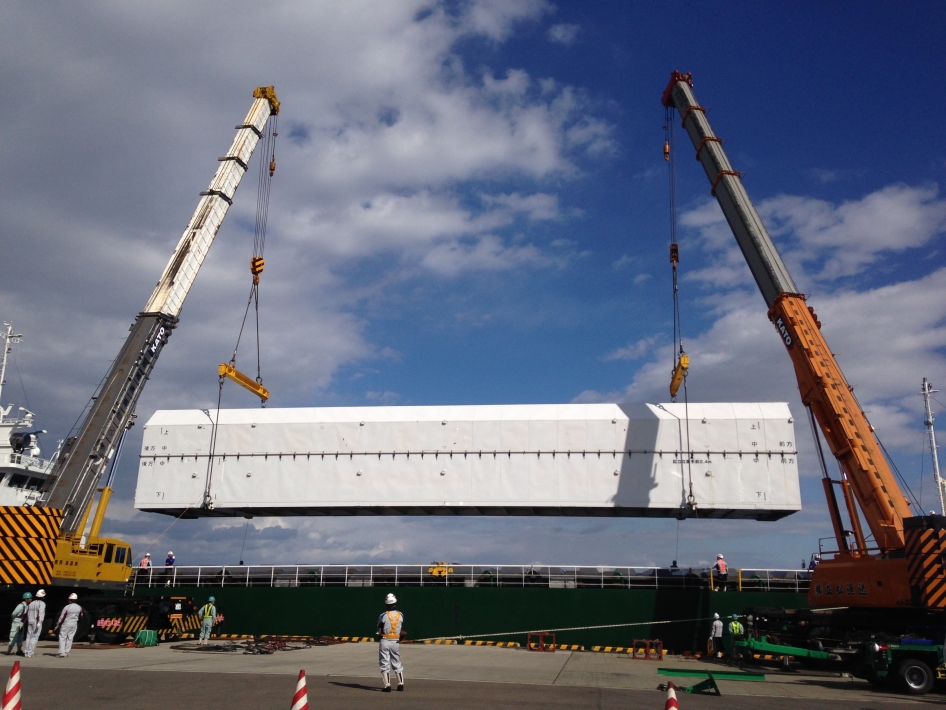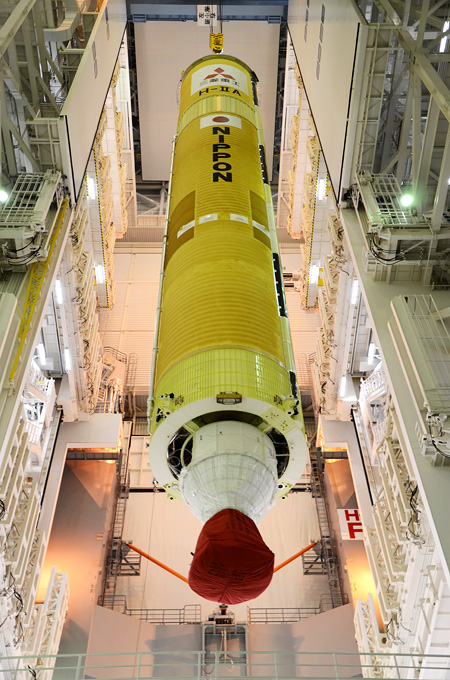Photos: NASA's Rain-Tracking GPM Satellite Mission in Pictures
Global Precipitation Measurement Mission's Core Observatory Encapsulated in Fairing
The fairing is lowered over the Global Precipitation Measurement mission's Core Observatory.
Officers Review Readiness of GPM Core Observatory for Launch
Chief officers from Mitsubishi Heavy Industries, Ltd., the Japan Aerospace Exploration Agency (JAXA) and NASA met on Wednesday, Feb. 26, 2014 in the Range Control Center (RCC) of the Tanegashima Space Center, Japan, to review the readiness of the Global Precipitation Measurement (GPM) Core Observatory for launch. The spacecraft is scheduled to launch aboard an H-IIA rocket early on the morning of Feb. 28 Japan time.
Chief Officers Meet for GPM Launch Technical Briefing
Seated from left: Tatsuo Namikawa, Director, Mitsubishi Launch Site Service Team (MILSET), Mitsubishi Heavy Industries, Ltd., Masahiro Kojima, GPM Dual-frequency Precipitation Radar project manager, Japan Aerospace Exploration Agency (JAXA), Art Azarbarzin, NASA Global Precipitation Measurement (GPM) project manager, Steven Neeck, NASA Deputy Associate Director, Flight Programs, Earth Science Division, and, Hiroyuki Nagata, Director Range Technology Development Office Space Transportation Mission Directorate, Japan Aerospace Exploration Agency (JAXA) are seen during a technical briefing for the launch of the Global Precipitation Measurement (GPM) Core Observatory aboard an H-IIA rocket, Feb. 26, 2014, Tanegashima Space Center, Japan.
GPM Encapsulation Complete
On Feb. 11, 2014, the Core Observatory was moved into the spacecraft fairing assembly building and into the Encapsulation Hall. Final inspections and preparations were completed for the installation into the fairing, which began on Feb 13.
Daruma Doll at GPM Launch Simulation
A daruma doll is seen amongst the NASA GPM Mission launch team in the Spacecraft Test and Assembly Building 2 during the all-day launch simulation for the Global Precipitation Measurement (GPM) Core Observatory, Saturday, Feb. 22, 2014, Tanegashima Space Center, Tanegashima Island, Japan.
Roadside Flag Welcomes NASA to Minamitame Town
A roadside flag welcomes the NASA team and visitors to Minamitame Town, one of only a few small towns located outside of the Japan Aerospace Exploration Agency’s Tanegashima Space Center. This image was released Feb. 22, 2014.
Components of the GPM
This image labels the major compenents of the GPM Core Observatory, including the GMI, DPR, HGAS, solar panels, and more. Image released Oct. 23, 2013.
Breaking space news, the latest updates on rocket launches, skywatching events and more!
NASA's GPM Satellite Tested on Goddard's Centrifuge
NASA technicians spun the Global Precipitation Monitor (GPM) satellite up to just over 10 RPM in Goddard Space Flight Center’s High-Capacity Centrifuge facility March 31, 2011. At that speed, the spin exerted a lateral pressure of 2.4 G’s, or 2.4 times the force of gravity on the satellite.
GPM's Launch Vehicle Arrives at Tanegashima Space Center
The launch vehicle for the Global Precipitation Measurement, or GPM, mission's Core Observatory arrived at Tanegashima Space Center, Japan, in the pre-dawn hours of Tuesday, Jan. 21, 2014, local time.
GPM's H-IIA Launch Vehicle No.23, First Stage VOS (Vehicle on Stand)
GPM is a joint mission between NASA and the Japan Aerospace Exploration Agency (JAXA). The Core Observatory will link data from a constellation of current and planned satellites to produce next-generation global measurements of rainfall and snowfall from space. Image released Feb. 20, 2014.

Space.com is the premier source of space exploration, innovation and astronomy news, chronicling (and celebrating) humanity's ongoing expansion across the final frontier. Originally founded in 1999, Space.com is, and always has been, the passion of writers and editors who are space fans and also trained journalists. Our current news team consists of Editor-in-Chief Tariq Malik; Editor Hanneke Weitering, Senior Space Writer Mike Wall; Senior Writer Meghan Bartels; Senior Writer Chelsea Gohd, Senior Writer Tereza Pultarova and Staff Writer Alexander Cox, focusing on e-commerce. Senior Producer Steve Spaleta oversees our space videos, with Diana Whitcroft as our Social Media Editor.
